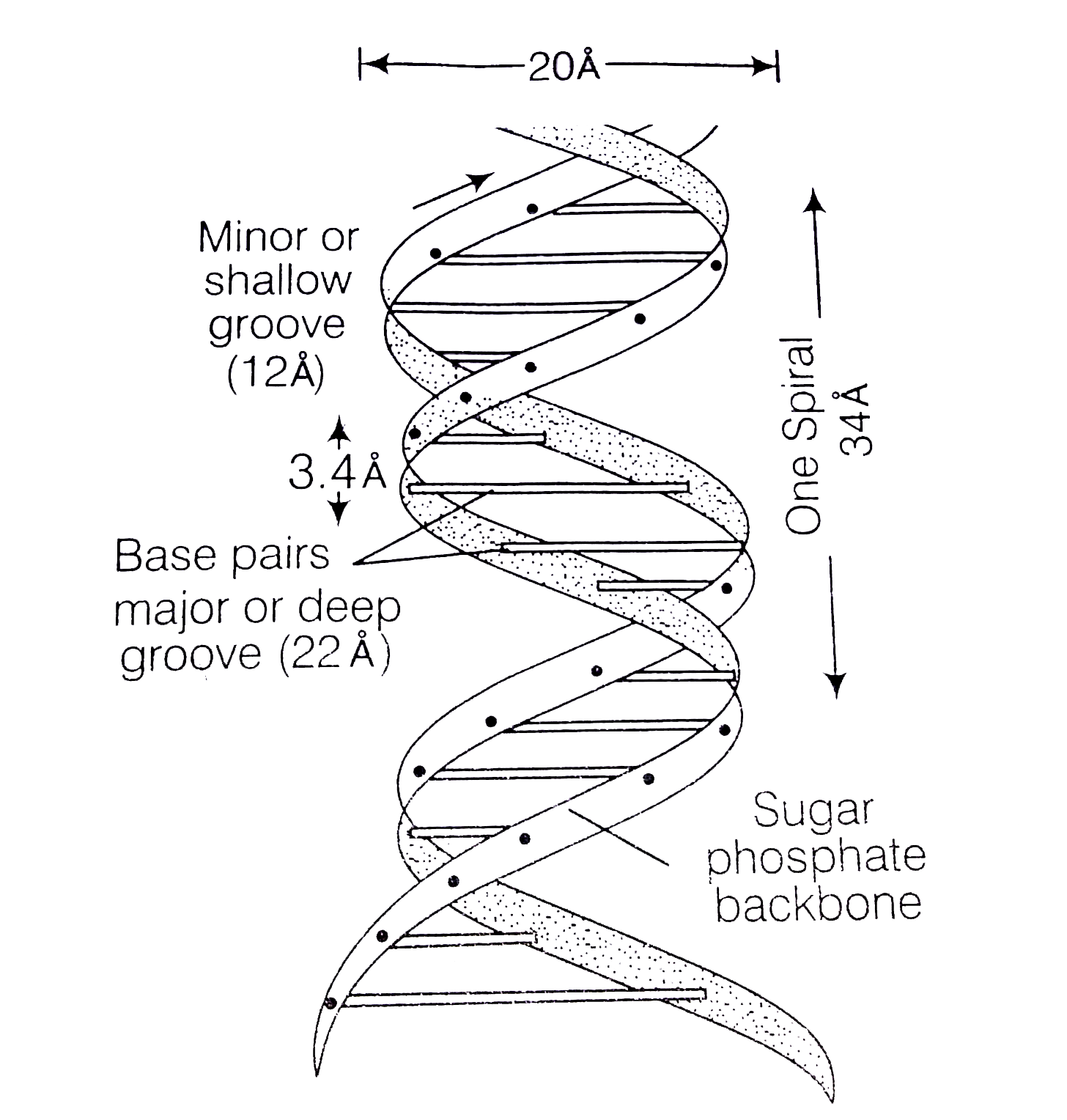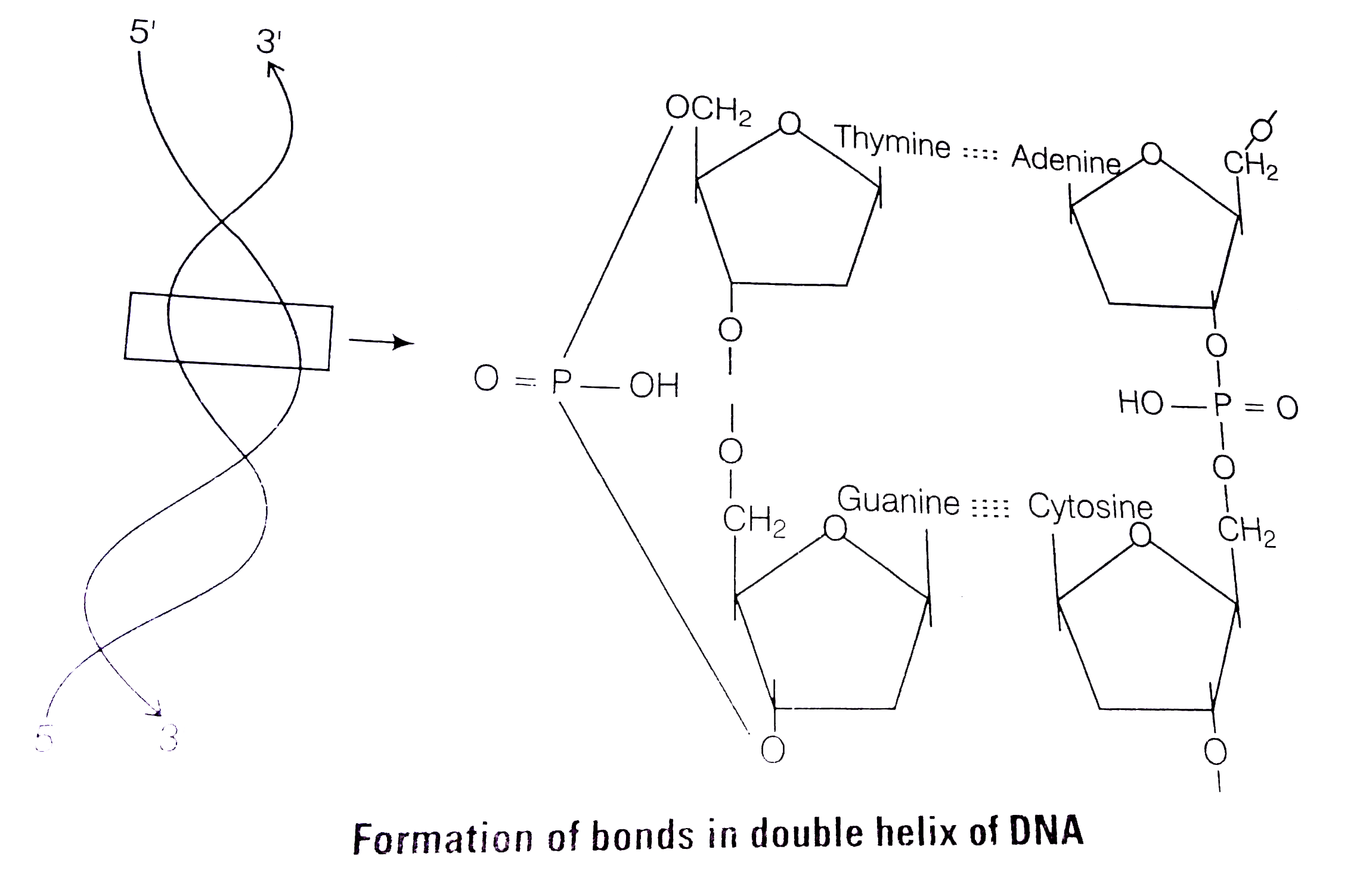Nucleic acid exhibit secondary structure. Describe through Watson-Crick model.
Video Solution
Text Solution
Nucleic acids are long chain macromolecules which are formed by end to end Ans. polymerisation of large number of repeated units called nucleotides. Nucleic acids show a wide range of secondary structures. A secondary structure is the set of InteractIons between bases and sugar phosphate backbone and is responsible for the shape that nucleic acid. 
James Watson and Francis Crick proposed a secondary structure of DNA molecules based on the crystallographic studies.
(i) DNA or deoxyribonucleic acid is a helically twisted double-chain polydeoxyribo- nucleotide macromolecule.
(ii) The two strands of DNA run anti-parallely to each other called as DNA duplex.
(iii) The spiral twisting of DNA has two types of alternate grooves, i.e., major and minor.
(iv) One turn of 360∘ of the spiral has about 10 nucleotides on each strand of DNA, occupying a distance of about 3.4 nm.
(v) The nucleotides within each strand are held together by the phosphodiester bonds between the 5' carbon of one nucleotide and the 3' carbon of the adjacent nucleotide. These strong covalent bonds holds the sugar/phosphate backbone together.
(vi) The two strands of DNA are held together by weak hydrogen bonds between the nitrogenous bases. These hydrogen bonds are base specific. That is adenine forms 2 hydrogen bonds with thymine CA= T and cytosine forms 3 hydrogen bonds with guanine (C≡G)
(vii) As specific and different nitrogen bases occur on two DNA chains, they are said to be complementary, i.e., purine lies opposite to pyrimidine. This purine-pyrimidine pairing also contributes to the thickness of strand, i.e., 2nm, and makes the two chains complementary

|
Updated on:21/07/2023
Topper's Solved these Questions
- BOOK - NCERT EXEMPLARCHAPTER - BIOMOLECULES EXERCISE - Short Answer Type Questions5videos
BIOMOLECULES
- BOOK - NCERT EXEMPLARCHAPTER - BIOLOGICAL CLASSIFICATIONEXERCISE - Long answer5videos
BIOLOGICAL CLASSIFICATION
- BOOK - NCERT EXEMPLARCHAPTER - Body Fluids and Circulation EXERCISE - LONG ANSWER TYPE Q5videos
Body Fluids and Circulation
Similar Questions
Knowledge Check
- Question 1 - Select One
Nucleic acids exhibit
ASecondary structureBTertiary structureCQuaternary structureDBoth (2) & (3) - Question 2 - Select One
A peptide chain attains secondary structure through the formation of
APeptide bondsBIntrachain ionic bondsCIntrachain hydrogen bondsDIntrachain disulphide bonds. - Question 3 - Select One
A peptide chain assumes secondary structure through the formation of
Ainterchain ionic bondBinterchain hydrogen bondCpeptide chain with peptide bonds only is a secondary structure itselfDNone of the above
Watson and Crick Model of DNA.
View SolutionDescribe the structure of nucleic acid as proposed by Watson and Crick.
View SolutionWatson and Crick model of DNA is
View SolutionClover leaf model of holley for tRNA is a 2D model giving secondary structure. A 3D model showing tertiary structure was
View SolutionAssertion : All proteinaceous enzymes have a three dimensional structure
Reason : The secondary struture of protein is according to amino acids present inside the polypeptideView Solution

